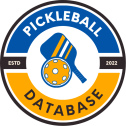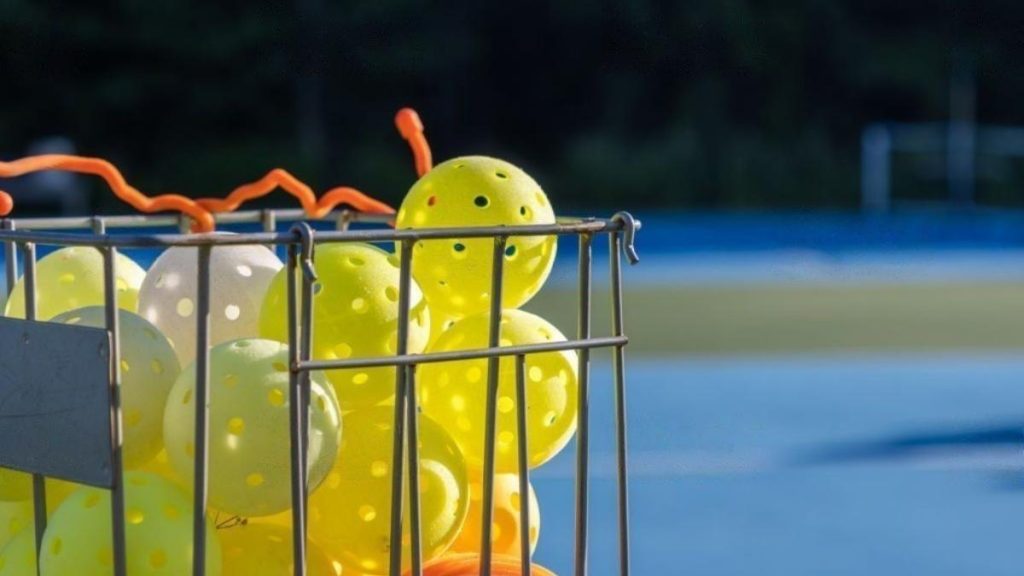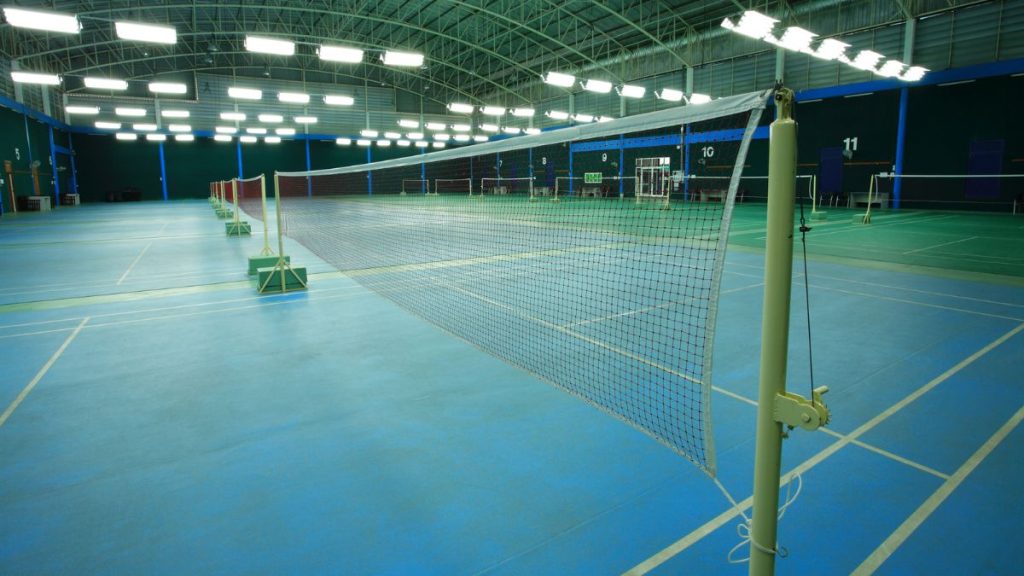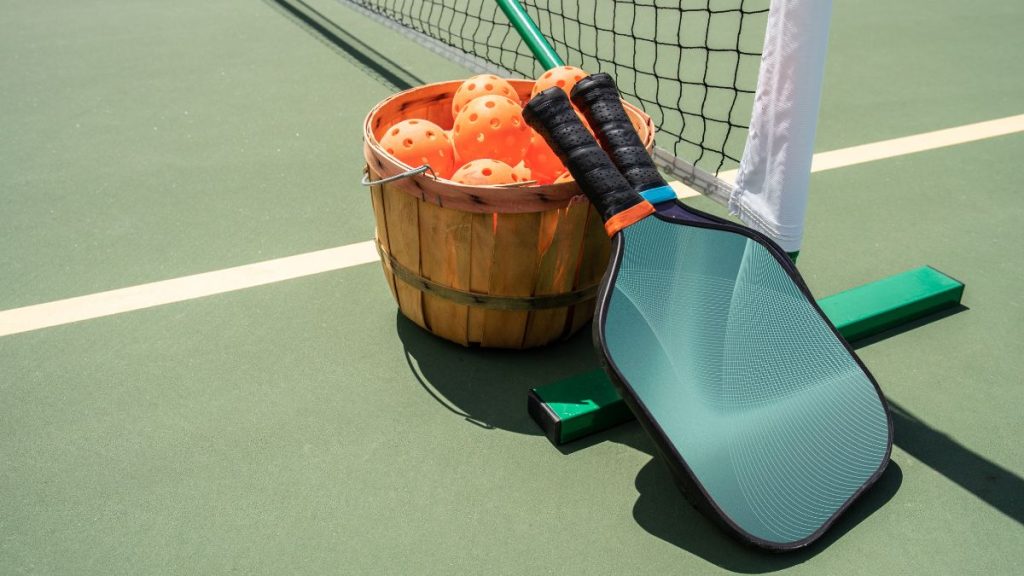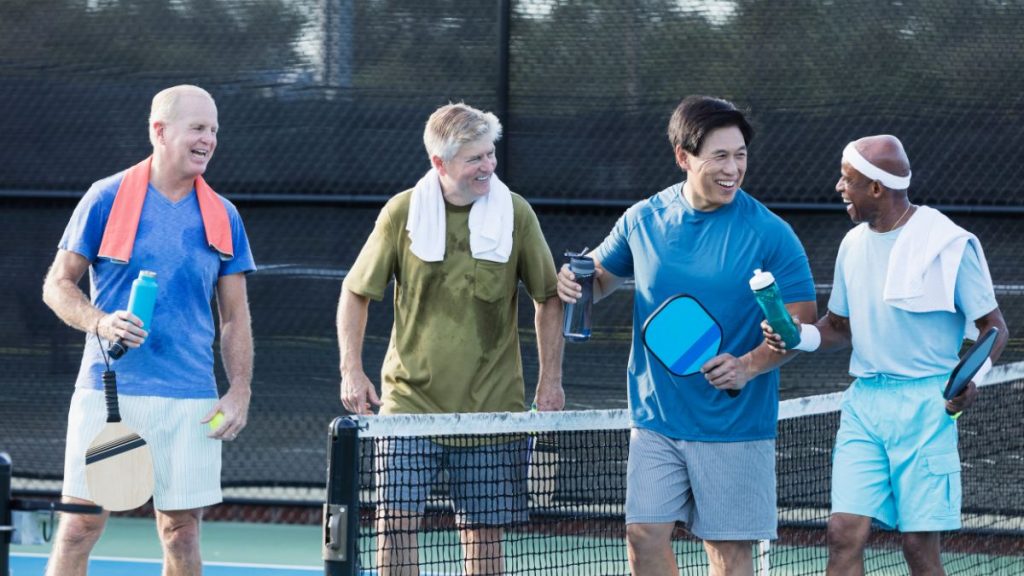Like a skillful painter carefully choosing the proper medium or tools to make their masterpiece, a decent athlete should know their sports equipment. After you decide what paddle ball to use, the next best thing to measure is your pickleball ball size.
There are two varieties of pickleball balls: an indoor variety and an outdoor kind. Determining what size to use follows from what kind of activity you are into, indoors or outdoors Pickleball. The Pickleballs used for outdoor play are larger, more durable, composed of smooth plastic, and have forty drilled holes. Pickleballs used inside are often bigger in diameter and softer than their outside counterparts.
What Kind of Ball Do You Use in Pickleball?
Pickleball is played using plastic balls that have holes punched in them, as opposed to the tennis balls that have felt coverings that are used in that sport. The term “Wiffle ball” is what most people use to describe this type of ball. These balls are much lighter than a tennis ball, and the holes in them generate less drag, so they go through the air far more efficiently than the tennis ball.
The conventional Wiffle ball is made of heavier plastic, while a pickleball is composed of lighter plastic and has varying degrees of toughness along with holes that have been put in it. Pickleballs used inside to have a finer texture, weigh 0.8 ounces, and have 26 holes. Pickleballs used outside weigh 0.9 ounces, contain 40 pores, and are less susceptible to being blown over by the wind.
Read on to learn more about this top-secret Pickleball, which is being produced to be quieter during communal play on pickleball courts. Other types of Pickleballs are also being made.
For the first half-century that pickleball was played, indoor and outdoor matches were played using a Cosom ball. In those days, Cosom was a brand name for a particular plastic ball with bigger holes punched into the ball. This caused the ball to move more slowly and made it more susceptible to the effects of the wind.
However, a lot of progress has been made in the game of pickleball during the last 10 years. There is no longer any necessity for Cosom, and the Pickleballs we play with now are quite different depending on whether they are played inside or outside.
The official Pickleballs are manufactured from a lightweight plastic substance. In most cases, it is first melted in a mold before injected into it. The pickleball will then have holes of uniform size drilled into it by the manufacturer, completing the look of a traditional pickleball.
What is a Quiet Pickleball Ball?
Pickleballs made from plastic can cause quite a ruckus during a rally. Not all players like the sound of a Pickleball smashing through the ground and from their paddles, so the ones prefer a more silent run-through. Due to the loud clunk made when the plastic ball hits the wooden paddle in pickleball, park agencies and residential neighborhoods are sometimes hesitant to construct new pickleball courts. Compared to striking a solid ball with a wooden paddle, the noise produced by this ball’s holes is much louder.
If you are concerned about not causing a stir while playing the game, then you are better off using Foam balls. These foam balls are not USAPA-approved for tournaments and official games, but this is still good for a rousing game with your peers.
What Size Ball Is Used in Pickleball?
The weight of an official pickleball ranges from.78 to.935 ounces, and its diameter ranges from 2.874 to 2.972 inches. Aside from the requirement that the ball is a single color throughout, there are no additional color constraints.
The United States Pickleball Association keeps track of balls that are deemed suitable for play at competitive tournaments. This particular list has 61 balls that come in a wide range of colors, designs, and brands made by several companies.
The USPA stipulates that a ball must be a single color to be considered compliant; however, in practice, pickleball balls are often orange, white, or yellow, depending on the color of the court. The only need is that their dimensions and weights conform to industry standards.
Is There a Difference Between Indoor and Outdoor Pickleball Balls?
As mentioned earlier, there is a difference between indoor and outdoor Pickleball balls.
It’s important to note that the playing surface of an indoor pickleball court is often softer and smoother than that of an outdoor court. They will be less damaging to your ball since they will be more like hardwood gym surfaces.
One of the most distinctive characteristics of indoor pickleball is its long-lasting plastic. To conform to the flatter surface, it is constructed from a plastic that is both lighter and more malleable.
Indoor balls are somewhat lighter than outside balls, coming in at approximately 0.8 ounces (22.68 grams). The lightweight design makes it harder to create force with each pass, leading to longer volleys.
Given these technical considerations, indoor pickleball is ideal for a controlled environment. It’s made to work with and improve upon the game of indoor pickleball. No other type of ball can provide the same level of play.
Take into account that its reduced gravitas makes it more susceptible to the effects of the wind if you decide to go that route. In addition, it will wear out faster since it was not designed to be used on a hard surface such as concrete or asphalt.
Heavy, weatherproof plastic makes outdoor Pickleball balls that will endure longer on hard courts and in harsh climates. An outdoor pickleball is somewhat heavier than an indoor one, but the difference is negligible at just approximately 25.51 grams or 0.9 ounces. Nonetheless, even a fraction of a pound may hugely impact a sport.
In general, outdoor balls are noisier and faster than their indoor counterparts. In addition, there are around 40 holes in an outdoor ball, whereas an indoor ball only has 26. A larger number of tiny holes are often found in an outdoor ball; however, this varies by manufacturer.
Now that you know the difference between the two, be careful not to swap one from the other because it will definitely affect your game and throw you off.
What Pickleball Do the Pros Use?
There are many things to consider when buying a good ball for Pickleball. When in doubt, why not just copy the choice of a seasoned professional? Most professional athletes will tell you to consider longevity and material. You have to factor in if you are playing indoors or outdoors.
Pickleballs are available in a wide range of brands, each with its own claimed lifespan. On the other hand, a standard outdoor pickleball court should endure at least 10 games before showing signs of wear. Since indoor balls are never exposed to the weather, they have a longer lifetime. Indoor pickleball balls seldom shatter, although they become worn down and soft in some areas after repeated use.
High-quality thermoset plastics, like acrylic, epoxies, and melamine, are used to make the finest Pickleballs, so be sure to read the specifics of the ball you would use.
Now that you know what to look for in a good ball, might we suggest a few brands that we think you might like because of their well-earned reputation?
When it comes to durability and playability, Dura Fast 40 is unrivaled. In addition to regular usage at events around the nation, it has served as the official ball at the US Open and the Nationals on many occasions.
This outdoor pickleball’s popularity stems in part from the fact that this really bounces lower than other balls. This is a major issue for 5.0 gamers. Other balls have a high bounce, making it simple to hit the ball over the net.
Another good brand is the Onix Fuse if you want consistency and good play. Professionals have long ranted and raved that certain factory-approved balls bounce excessively high even before they’ve been played. However, starting the 2018 season, the USAPA no longer allows balls to be treated before tournament play.
To condition a ball, one must take it out of its packaging and manipulate it such that its bounce is exactly the height specified. As soon as you open the box, your new Onix ball will give you the desired height of the bounce. My tests show that it has a lower rebound than Pure 2. As a result, you may skip the step of conditioning the ball to have a USAPA-approved bounce straight from the box.
Conclusion
The right ball will help you win the match, but that is not the only thing that will make the score. Now that you know what factors you must consider, you are a step toward becoming a better Pickleball player. Crunch in those hours of practice, and they will be eating at the palm of your hands in no time.
